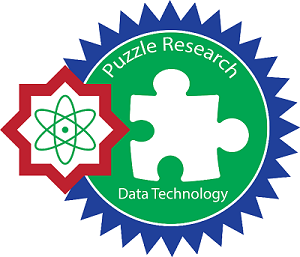ADDITIONAL MENU
Real-Time Detection of Face Masked & Face Shield Using YOLO Algorithm with Pre-Trained Model and Darknet
Abstract
There are new regulations requiring the use of masks or face shields to prevent the transmission of Covid-19. Using deep learning, a model can be made to detect faces that use masks and face shields by training the model using the previous pre-trained model and using a custom dataset. The purpose of this study is to create a deep learning model that can detect faces with and without masks and as well as face shields for the prevention of covid-19 transmission using YOLO (You Only Look Once) with pre-trained models and custom datasets in real-time. In this study, using pre-trained models from YOLOv3, YOLOv3-Tiny, YOLOv4, YOLOv4-Tiny, and YOLOv4-Tiny-3l with Darknet Framework and compare between average pooling and max pooling in the convolutional neural network YOLO to detect face masks and face shields as a real-time. From experiment the highest mAP was obtained from YOLOv4 using average pooling with a value is 97.64% although the difference is not too much with YOLOv4 using max pooling with value 97.57% and the lowest was YOLOv3-Tiny using max pooling, which was 94.09%, and for the highest FPS was obtained by YOLOv4-Tiny with Fps values is 171 and mAP 96.75%. And for real-time detection of face masks and face shields, the best model used in testing using webcam 1080p is from YOLOv4-Tiny, because the FPS is quite good and the mAP is quite high.
Keywords
YOLO;Deep Learning;Darknet;Max Pooling;Average Pooling
Full Text:
PDFReferences
L. Arnold, S. Rebecchi, S. Chevallier, and H. Paugam-Moisy, “An introduction to deep learning,” ESANN 2011 - 19th Eur. Symp. Artif. Neural Networks, pp. 477–488, 2011, doi: 10.1201/9780429096280-14.
M. S. Ejaz and M. R. Islam, “Masked face recognition using convolutional neural network,” 2019 Int. Conf. Sustain. Technol. Ind. 4.0, STI 2019, vol. 0, pp. 1–6, 2019, doi: 10.1109/STI47673.2019.9068044.
R. Gopal, S. Kuinthodu, M. Balamurugan, and M. Atique, “Tiny object detection: Comparative study using single stage CNN object detectors,” 2019 5th IEEE Int. WIE Conf. Electr. Comput. Eng. WIECON-ECE 2019 - Proc., pp. 2019–2021, 2019, doi: 10.1109/WIECON-ECE48653.2019.9019951.
P. Adarsh, P. Rathi, and M. Kumar, “YOLO v3-Tiny: Object Detection and Recognition using one stage improved model,” 2020 6th Int. Conf. Adv. Comput. Commun. Syst. ICACCS 2020, pp. 687–694, 2020, doi: 10.1109/ICACCS48705.2020.9074315.
R. Girshick, J. Donahue, T. Darrell, J. Malik, and U. C. Berkeley, “R-Cnn-Cvpr,” 2012.
R. Girshick, “Fast R-CNN,” Proc. IEEE Int. Conf. Comput. Vis., vol. 2015 Inter, pp. 1440–1448, 2015, doi: 10.1109/ICCV.2015.169.
S. Ren, K. He, R. Girshick, and J. Sun, “Faster R-CNN: Towards Real-Time Object Detection with Region Proposal Networks,” IEEE Trans. Pattern Anal. Mach. Intell., vol. 39, no. 6, pp. 1137–1149, 2017, doi: 10.1109/TPAMI.2016.2577031.
J. Redmon, S. Divvala, R. Girshick, and A. Farhadi, “You only look once: Unified, real-time object detection,” Proc. IEEE Comput. Soc. Conf. Comput. Vis. Pattern Recognit., vol. 2016-Decem, pp. 779–788, 2016, doi: 10.1109/CVPR.2016.91.
J. Redmon and A. Farhadi, “YOLO9000: Better, faster, stronger,” Proc. - 30th IEEE Conf. Comput. Vis. Pattern Recognition, CVPR 2017, vol. 2017-Janua, pp. 6517–6525, 2017, doi: 10.1109/CVPR.2017.690.
J. Redmon and A. Farhadi, “YOLO v.3,” Tech Rep., pp. 1–6, 2018, [Online]. Available: https://pjreddie.com/media/files/papers/YOLOv3.pdf.
F. Wu, G. Jin, M. Gao, Z. He, and Y. Yang, “Helmet detection based on improved YOLO V3 deep model,” Proc. 2019 IEEE 16th Int. Conf. Networking, Sens. Control. ICNSC 2019, pp. 363–368, 2019, doi: 10.1109/ICNSC.2019.8743246.
V. Suárez-Paniagua and I. Segura-Bedmar, “Evaluation of pooling operations in convolutional architectures for drug-drug interaction extraction,” BMC Bioinformatics, vol. 19, pp. 92–101, 2018, doi: 10.1186/s12859-018-2195-1.
M. Sun, Z. Song, X. Jiang, J. Pan, and Y. Pang, “Learning Pooling for Convolutional Neural Network,” Neurocomputing, vol. 224, pp. 96–104, Feb. 2017, doi: 10.1016/j.neucom.2016.10.049.
H. Gholamalinezhad and H. Khosravi, “Pooling Methods in Deep Neural Networks, a Review,” 2020, [Online]. Available: http://arxiv.org/abs/2009.07485.
Y. Mao and S. Lee, “Deep Convolutional Neural Network for Air Quality Prediction,” J. Phys. Conf. Ser., vol. 1302, no. 3, 2019, doi: 10.1088/1742-6596/1302/3/032046.
J. Redmon, “Darknet: Open source neural networks in c.” 2014, [Online]. Available: http://pjreddie.com/darknet.
Y. Wang, Derui and Li, Chaoran and Wen, Sheng and Han, Qing-Long and Nepal, Surya and Zhang, Xiangyu and Xiang, “Daedalus: Breaking Nonmaximum Suppression in Object Detection via Adversarial Examples,” IEEE Trans. Cybern., pp. 1–14, 2021, doi: 10.1109/TCYB.2020.3041481.
DOI: http://dx.doi.org/10.24014/ijaidm.v4i2.14235
Refbacks
- There are currently no refbacks.
Office and Secretariat:
Big Data Research Centre
Puzzle Research Data Technology (Predatech)
Laboratory Building 1st Floor of Faculty of Science and Technology
UIN Sultan Syarif Kasim Riau
Jl. HR. Soebrantas KM. 18.5 No. 155 Pekanbaru Riau – 28293
Website: http://predatech.uin-suska.ac.id/ijaidm
Email: ijaidm@uin-suska.ac.id
e-Journal: http://ejournal.uin-suska.ac.id/index.php/ijaidm
Phone: 085275359942
Journal Indexing:
Google Scholar | ROAD | PKP Index | BASE | ESJI | General Impact Factor | Garuda | Moraref | One Search | Cite Factor | Crossref | WorldCat | Neliti | SINTA | Dimensions | ICI Index Copernicus
IJAIDM Stats










